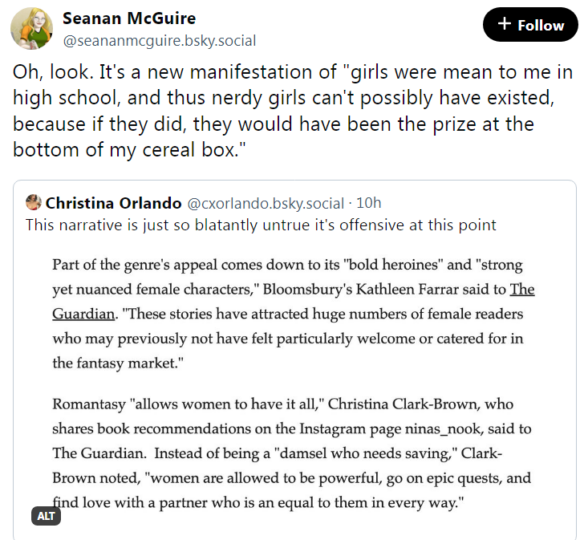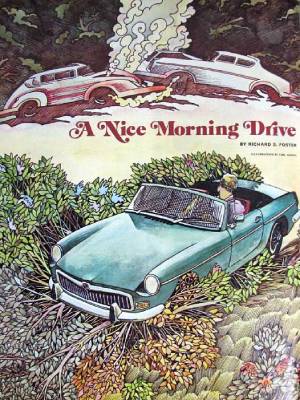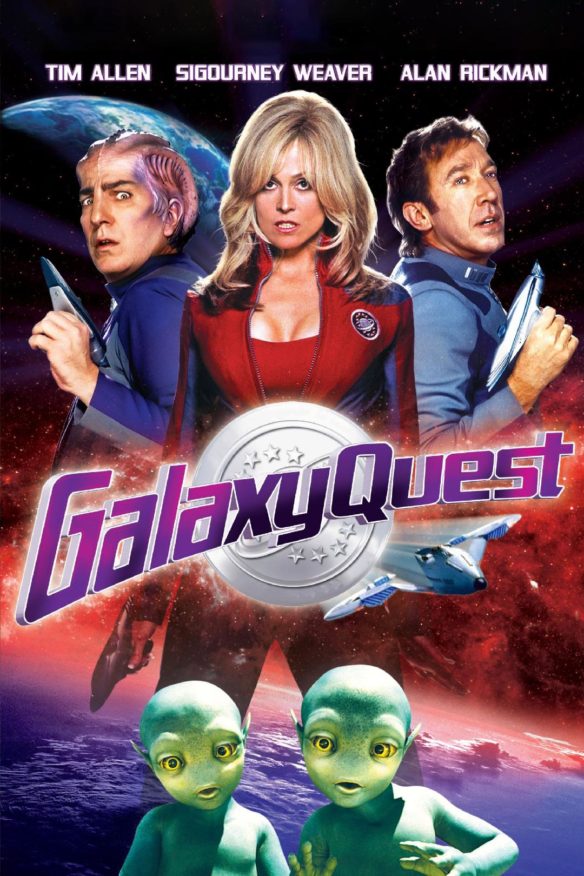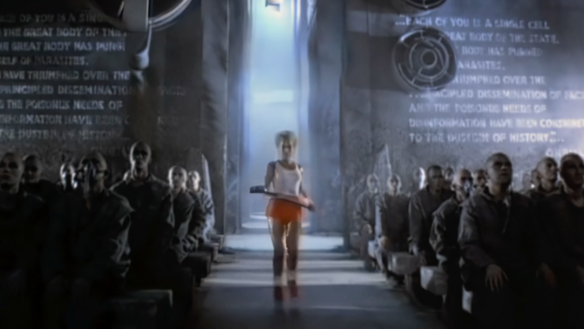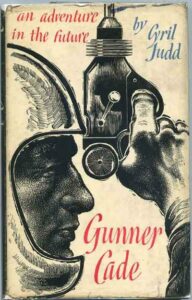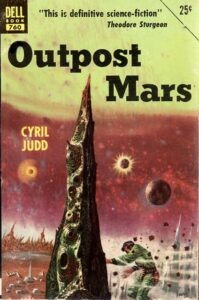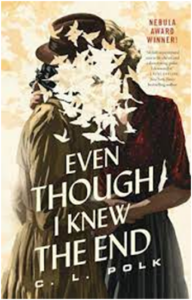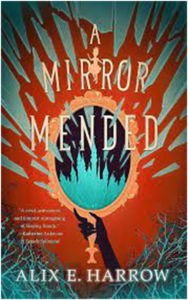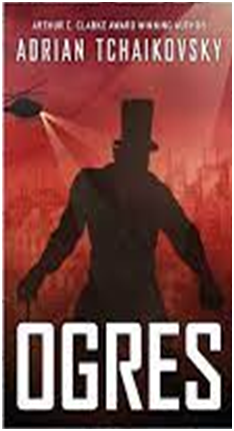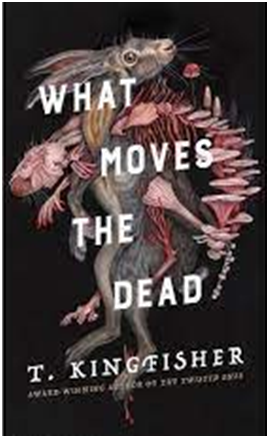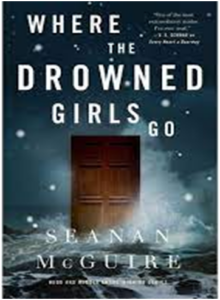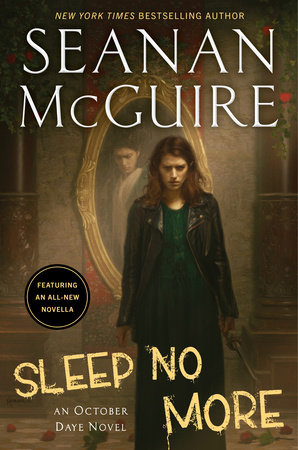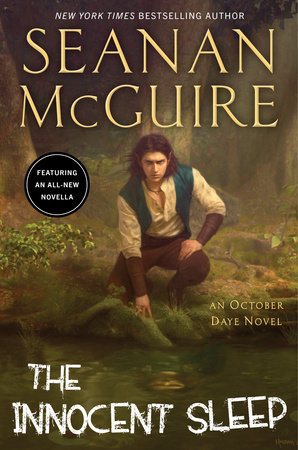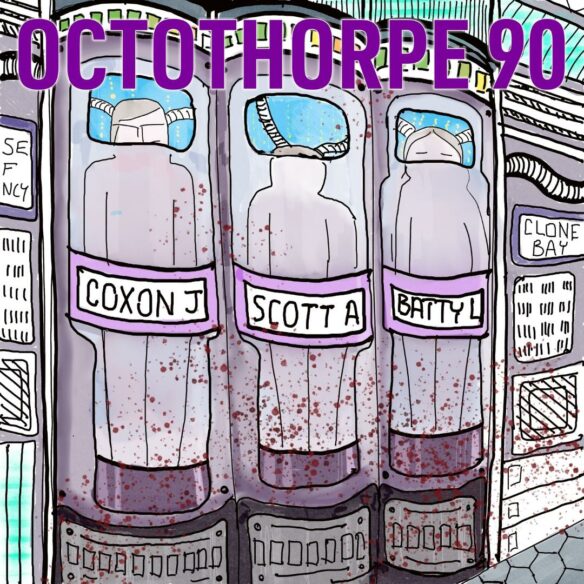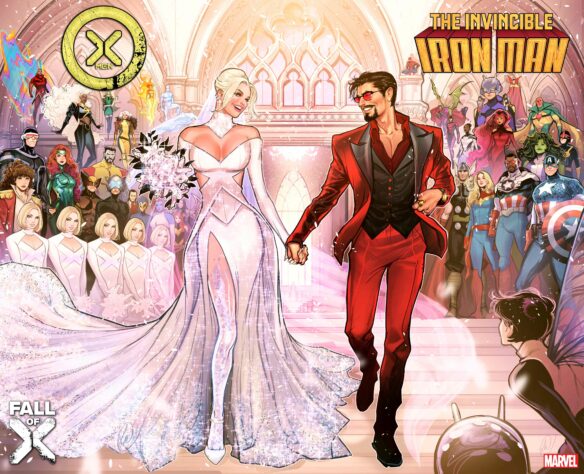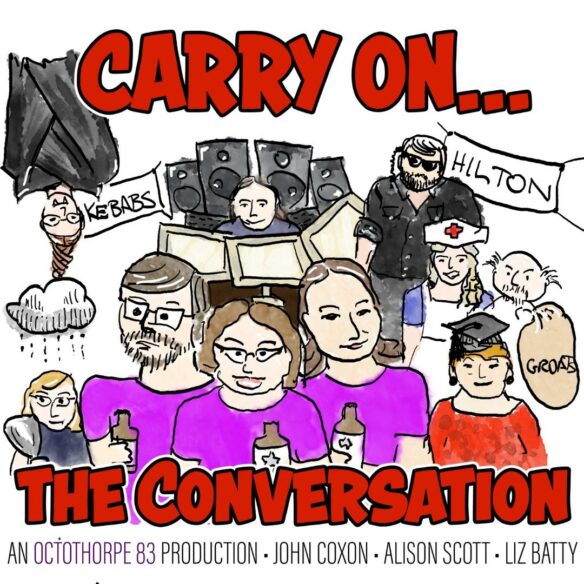(1) A YEAR OF READING. Joachim Boaz weighs in with “My 2024 in Review (Best Science Fiction Novels and Short Fiction, Articles/Podcasts, Reading Initiatives, and Bonus Categories)” at Science Fiction and Other Suspect Ruminations. These are not works published in 2024 – they are what Boaz read in 2024. That’s why he can rank a book from 1981 as his number one novel:
1. Ignácio de Loyola Brandão’s And Still the Earth, (1981, trans. Ellen Watson, 1985), 5/5 (Masterpiece).
A brutal dystopia written during an era of military dictatorship in Brazil (1964-1985), And Still the Earth charts the strange movements of a man who wakes up with a painless hole in his hand. This is a Brazil intent on erasing the past. A Brazil that holds onto fragments of knowledge via a complex system of oral signifiers. A Brazil hurtling towards ecological, political, and social destruction. Not to be missed if you’re of the predisposition to enjoy a dense, intense, and surreal shuffle towards apocalypse….

(2) WHY NOT SAY WHAT HAPPENED? Episode 13 of Scott Edelman’s Why Not Say What Happened podcast is now live — “How Joker Co-creator Jerry Robinson Predicted I’d Work in Comics”.
As I consider the way getting rejected by the Clarion Workshop in 1974 helped me break into comics and getting accepted by the Clarion Workshop in 1979 helped me break out of comics, I remember the writing schedule suggested by Harlan Ellison which proved impossible for me, the terrible comics-related advice I got from Damon Knight, Thomas M. Disch’s tips for building better characters, the questions Robin Scott Wilson wanted us to ask when critiquing short stories, the night Joker co-creator Jerry Robinson predicted I’d someday work in comics, the Barbie artist who painted me with tattoos and drew my portrait, the Robert Graves poem which explains why I had to quit writing comics, and much more.

Edelman speaks about the following artwork in the episode — a portrait of him drawn at Clarion in 1978 by his late classmate Barb Rausch, who went on from Clarion to become a Barbie artist.

And here’s where you can see all the possible places to download episodes of the entire series.
(3) FAAN VOTING BEGINS. Nic Farey today distributed The Incompleat Register 2024, the voters’ guide and pro forma ballot for the 2025 FAAn awards. Voting is open and continues until midnight (Pacific time) Friday March 29, 2025. The award recognizes work in fanzines.
The awards will be announced at Corflu 42 in Newbury, UK on April 13, 2025.
Voting is open to anyone with an interest in fanzines, membership in Corflu is not required.
(4) OUT OF DISNEY’S LEAGUE. “David Fincher on Failed ‘Twenty Thousand Leagues Under the Sea’ Take” at IndieWire.
There have been many potential projects that haven’t come to fruition for David Fincher, from his take on Aaron Sorkin’s “Steve Jobs” starring Christian Bale to his “Black Dahlia” mini-series led by Tom Cruise. But one failed vision people were clamoring for, perhaps above all others, was his adaptation of Jules Verne’s “20,000 Leagues Under the Sea.”…
…“You can’t make people be excited about the risks that you’re excited about,” said Fincher. “Disney was in a place where they were saying, ‘We need to know that there’s a thing that we know how to exploit snout to tail, and you’re going to have to check these boxes for us.’ And I was like, ‘You’ve read Jules Verne, right?’”
In the original novel and its follow-up, it is revealed that Captain Nemo is in fact royalty who participated in the real-life Indian Rebellion of 1857, an act which led to the death of his family and him fleeing to the seas. Fincher wanted to center these details and make it a serious film, but Disney didn’t want it to distract from the fun, action/adventure piece they were hoping to produce.
“This is a story about an Indian prince who has real issues with white imperialism, and that’s what we want to do,” Fincher said he told Disney. “And they were like, ‘Yeah, yeah, fine. As long as there’s a lot less of that in it.’ So you get to a point where you go, ‘Look, I can’t fudge this, and I don’t want you to discover at the premiere what it is that you’ve financed. It doesn’t make any sense because it’s just going to be pulling teeth for the next two years.’ And I don’t want to do that. I mean, life’s too short.”…
(5) GOVERNMENT SUPPORT FOR WRITERS? Gareth Rubin pushes back in a Guardian commentary: “Impoverished authors are told they should do it for the love. Try saying that to a dentist”.
This week will be like A-level results week for authors, but with added economic jeopardy. For a good whack of the 100,000 writers and translators in the UK, finding out how many books they have sold in the run-up to Christmas will mean the difference between turning on the heating and sitting shivering through the January frost. Many in the latter camp will be forced to accept that life as a professional novelist, poet or dramatist is no longer sustainable. Time to close the book. The end.
Can it be so bad? Surely novelists aren’t really on the breadline? Well, given that the median income for professional writers fell from £12,330 in 2007 to £7,000 in 2022, you can see why most will be desperately hoping for a festive bump in earnings. A bohemian life in a freezing garret only sounds attractive to those who have never lived it.
In a country proud of its literary history, we’re at a tipping point when the number of books and plays written could soon collapse with the number of people who can afford to create them….
…Direct financial assistance is important, too. In the Republic of Ireland most income from writing and musical composition is tax-free – not because its government is staffed by Yeats-quoting aesthetes, but because it appreciates the hard-nosed business case. Writers and musicians spread a positive image of the country, attracting tourist euros and promoting soft power, which is far cheaper than the hard stuff: give a creative a tax break and bring in five times as much from American visitors. Something for the chancellor to mull while she glumly stares at the Treasury projections for 2025.
(6) DOES THAT WORD MEAN WHAT YOU THINK IT MEANS? The last time I heard about a “British invasion” it was a reference to rock groups like the Beatles. Now the label is being applied to a different channel of cultural influence: “Gobsmacked! by Ben Yagoda review – the British invasion of American English” – in the Guardian.
There is a scene in the 1999 British romcom Notting Hill that nicely illustrates the point of Gobsmacked!, a jolly account of “the British invasion of American English”. In it, Hugh Grant, a fully fledged adult, tries to scale a fence to impress Julia Roberts, and slipping, he exclaims “whoops-a-daisy!” As Britons know, “whoops-a-daisy” is a perfectly reasonable locution for an adult man to use, but it causes Roberts, an American, to bend double laughing. As it happens, “whoops-a-daisy” isn’t included in Gobsmacked!, but its collation of so many other ludicrous British terms – “kerfuffle,” “pear-shaped”, “boffin” – that have made inroads into the US will make the average Briton proud.
Ben Yagoda’s lexicon is a spin-off from his popular blog Not One-Off Britishisms, an unwieldy title for a fun experiment in which the professor emeritus of English at the University of Delaware tracks British usages in the US. Like all popular books about language, Gobsmacked! does several things at once: it offers a lot of “fancy that!” facts about the origin of popular words and phrases. (Did you know the word “cushy” derives from Persian and Urdu, and was a military term popularised by British soldiers during the first world war?) It also gives the broader historical context of why certain phrases took off at certain times. (A combination of Geri Halliwell and a single episode of South Park is blamed for the introduction of the pejorative “ginger” to the American lexicon – which Pagoda records Ed Sheeran among others lamenting.) Above all, though, it provides a starting point for pedantic language nerds to argue over the specific meaning and provenance of words (the section on “posh” is divine).
Gobsmacked! also offers a very specific and always welcome opportunity for Britons to roll their eyes at Americans. I can’t say I encountered this during my 17 years in the US, but, for example, it reports that Americans routinely use the British phrase “full of beans” – traced in one of its earliest usages to a letter by Benjamin Disraeli in 1875 – to mean “full of shit” rather than “energetic”. Ha!
As a study aid, Yagoda relies on something called the Google Books Ngram Viewer, which measures the frequency of words across millions of texts online. In a typical example, he cites the fact that, between 2000 and 2005, use of the phrase “run-up”, a British term to describe a preliminary period, increased in the US by 50%, largely in relation to the Iraq war. This is both a necessary measurement tool and also, on occasion, a means of dragging the book into the weeds. By the end, I was a bit sick of the Ngram Viewer, but it was worth putting up with for the sheer joy of the rest of the book….
(7) TODAY’S BIRTHDAY.
[Written by Paul Weimer.]
January 5, 1978 — Seanan McGuire, 47.
By Paul Weimer: One really cannot discuss modern urban fantasy without discussing Seanan McGuire.
While the likes of Emma Bull, Mercedes Lackey, and Laurell K Hamilton may have originated urban fantasy, it is Seanan McGuire, who writes prolifically and addictively (for readers) who holds Court in that space today. Take the 18 books of the October Daye series, featuring her half fae half human titular protagonist living in San Francisco and trying to navigate Fae courts and human relations at the same time. Or her Incryptid series, which may technically count more as SF than fantasy, with a variety of strange cryptid species living in our modern day. My favorite character in that series is the inestimable Sarah Zellaby, who is actually a telepathic ambush predatory wasp that just happens to look human. (She finally got full POV book of her own in the ninth book in that series, Imaginary Numbers). Did I mention that she was prolific within her various series (Incryptid is on book 14 of the series)?
Really, I don’t read McGuire for her rich worlds, or her clever and interesting plots, as much as those are wonderful features in her work. No, McGuire’s strength are characters, characters that you feel like you can know as well as a best friend or a sibling. Her (9 volumes and counting) Wayward Children novellas are one of the defining post-modern takes on portals and portal fantasies, but it is the characters, the children of Eleanor West’s school, that really make those novellas sing with joy, even as they often discuss very dark subjects. (McGuire doesn’t shy away from very dark and disturbing topics in her fiction).
And this doesn’t even touch her more biological science fictional strain of books as Mira Grant. The Newsflesh (FEED) trilogy is particularly good, and particularly representative of her skills as a storyteller, and, once again, creator of characters that make you feel. It is rather ironic that, if anything, given the reactions and memory holing of the Covid-19 pandemic, that if anything, McGuire’s trilogy didn’t go far enough in imagining some of the inanities and delusions of people confronted with the Kellis-Amberlee virus in reality. But, then, I think we all missed the boat on this one. (c.f. The movie Contagion).
On a personal note, Seanan is a friend. We’ve had adventures together on multiple continents now, and I look forward to the hoped for chance of seeing her in her “home territory” of the Pacific Northwest this summer of 2025 during Worldcon. I’ve been told to bring my macro lens.
Happy birthday, Seanan!

(8) COMICS SECTION.
- Brewster Rockit has a problem common with the new year.
- Carpe Diem suspects somebody didn’t do their own homework.
- Close to Home suffers from a homonym.
- Foxtrot features an Escher-assisted workout.
- Reality Check meets an undiscovered tribe.
- Wallace the Brave creates a new myth.
(9) ANOTHER HAPPY BIRTHDAY! The Sunday Morning Transport turns four years old this January. Hoping to tempt readers to subscribe, they offer a free read:
For our first story of 2025, we are delighted to welcome E. Catherine Tobler and her Martian dogsled team to the Transport, in a nail biting race to a distant polar ice cap. “First, Last, Oldest, True”.
(10) SECOND CHANCE? In “’The Lord of the Rings: The War of the Rohirrim’: A Tokyo Take”, Animation World Network writer Andrew Osmond performs a box office autopsy before telling readers at least one theater in Tokyo sold a bunch of tickets to the movie.
Tokyo often feels a century or two ahead of the rest of the world (anachronisms like faxes notwithstanding.) And yet when I saw The Lord of the Rings: The War of the Rohirrim in a Tokyo cinema, the Saturday after Christmas, I could have slipped a few weeks into the past.
After all, I’d read a heap of reports about how the Middle-Earth anime was DOA, at least on the big screen. In its first two weeks in U.S. cinemas, it failed to earn $10 million. By the time it opened in Japan, it had already gone to digital in America.
To add insult, a Variety report suggested Rohirrim’s American producers only made the film as a licensing maneuver. On this account, it had never mattered if Rohirrim made money or not. New Line Cinema and its parent Warner Bros. just needed a Middle-Earth film – any Middle-Earth film – so they could retain the rights to make “real” Middle-Earth films down the line.
From a corporate perspective, Rohirrim could have been Middle-Earth’s answer to Fantastic Four. Not the terrible ‘noughties Four films with Chris Evans and Jessica Alba, but the unspeakable shoestring 1994 film, never commercially released, which was made purely to keep a license.
Except that animation fans know there’s an older precedent with a Tolkien cartoon. The place was Prague, the year was 1967, and the animator was the legendary, Oscar winner Gene Deitch. He spent nearly a year developing The Hobbit painstakingly as a feature film. Then he was forced to rush out a barely-animated 12-minute short in a couple of weeks flat.
It was so his paymaster, William L. Snyder of Rembrandt Films, could retain the rights to Tolkien’s works – then sell them back to Tolkien for a fortune. Deitch’s account is online here; he also wrote about the experience in his online book, “How to Succeed in Animation,” published on AWN. You can see the film here….
(11) SUNNIER DAYS. “What Happened to Carter’s White House Solar Panels? They Lived On.” The New York Times tells the story (behind a paywall).
It was a novel idea at the time, but one that made sense: In 1979, President Jimmy Carter had 32 solar panels installed on the roof of the White House.
They were removed just seven years later, under President Ronald Reagan. But that wasn’t the end of their story. They were picked up at a bargain price by a small college in Maine, where they continued to generate power for years, and eventually ended up scattered around the United States and China.
When the panels were first set up on the roof of the West Wing, energy independence was a big issue in America. An oil embargo imposed by Arab countries in 1973, in part to pressure the United States over its support for Israel in a brief war that year, had sent shock waves though the American economy.
“This dependence on foreign sources of oil is of great concern to all of us,” Mr. Carter said at an event to introduce the solar array. “No one can ever embargo the sun or interrupt its delivery to us.”
It was a decade before the first congressional hearing on climate change. “There’s no doubt Jimmy Carter was well ahead of his time,” said Ernest Moniz, the energy secretary under President Barack Obama and now chief executive of Energy Futures Initiative, a nonprofit group focused on renewable energy.
In 1986, the Reagan administration had the panels removed during work on the White House roof. They were never reinstalled.
The rejected panels, which had been used to heat water in the White House, were shipped to the suburbs of Washington, where they languished in a Virginia warehouse for years. Then, in 1991, Peter Marbach, a director at Unity College in Maine, was trying to figure out how to dig the school out of a financial hole. He spotted a picture of the panels in a magazine and decided he wanted to bring them back to life.
“It was a combination of utter disbelief and anger that Reagan had taken them down, and a simultaneous crazy ‘lightbulb’ idea to get the panels and draw attention to Unity’s mission as an environmental college,” said Mr. Marbach, who is now a landscape photographer based in Oregon….
(12) VIDEO OF THE DAY. Dan Monroe wants to know “Whatever Happened to CLOSE ENCOUNTERS of the THIRD KIND?”
[Thanks to Andrew Porter, John King Tarpinian, Chris Barkley, Cat Eldridge, SF Concatenation’s Jonathan Cowie, Steven French, Kathy Sullivan, Teddy Harvia, and Mike Kennedy for some of these stories. Title credit belongs to File 770 contributing editor of the day Andrew (not Werdna).]









